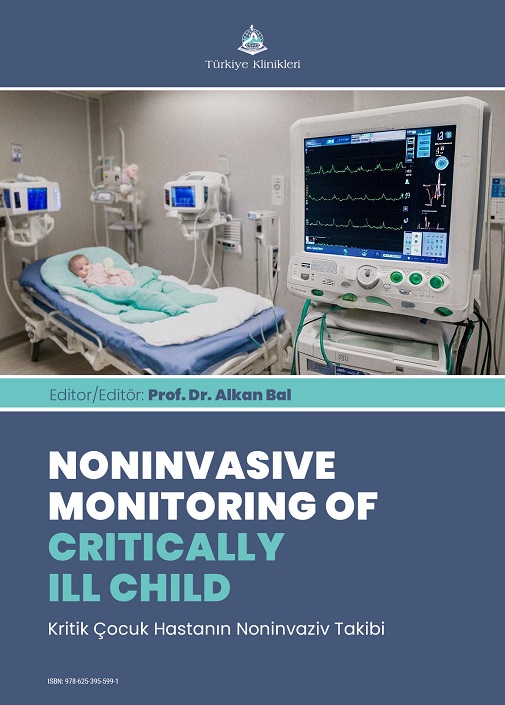The rapid, safe, and effective assessment of critically ill pediatric patients presenting to the emergency department is of paramount importance, both for improving clinical outcomes and for ensuring the efficient use of healthcare resources. In this context, non-invasive monitoring methods have become indispensable in the management of critically ill children.
The need for objective criteria in inpatient evaluation during triage highlights the significance of non-invasive monitoring. Accurate and prompt measurement of key physiological parameters—such as respiratory rate, heart rate, oxygen saturation, and body temperature, which vary by age— enables an objective assessment of the patient’s clinical status. This facilitates the accurate assignment of triage categories and allows for prioritized, timely interventions. Rapid assessment is especially critical in severely ill children. Non-invasive methods—such as blood pressure monitoring, pulse oximetry, capnography, and bedside ultrasonography—enable the acquisition of multiple vital parameters within a short time frame. This speed can be life-saving in time-sensitive pediatric critical care scenarios.
The limited availability of trained personnel to perform invasive procedures poses a significant challenge, particularly in lowand middle-income countries. Procedures such as arterial cannulation or central venous catheterization are time-consuming and require a high level of technical expertise. In such situations, non-invasive techniques provide reliable and timely data that support clinical decision-making and save valuable time. Moreover, the risks associated with invasive interventions, including infection, bleeding, and mechanical complications, further emphasize the preference for non-invasive approaches. These risks are particularly pronounced in immunosuppressed or critically ill pediatric patients, making non-invasive monitoring a safer alternative that enhances patient safety.
This book aims to explain in detail the new monitoring methods that have been used in the care of critically ill children in accordance with technological developments.. Accordingly, current monitoring systems related to neuromonitoring, hemodynamic monitoring, and fluid management have been compiled based on recent literature and the clinical experiences of practitioners.
In conclusion, non-invasive monitoring has become a cornerstone in the early diagnosis and effective management of critically ill children, offering rapid, safe, repeatable, and complication-free access to clinical data. Technological advances continue to introduce new monitoring capabilities into clinical practice at a rapid pace. Broad adoption of these methods in routine pediatric emergency care will contribute significantly to improving the quality of care delivered to critically ill children.
Prof. Dr. Alkan Bal
Manisa Celal Bayar University, Faculty of Medicine,
Department of Pediatric Emergency,
Manisa, Türkiye
Bölümler
Noninvasive Hemoglobin Monitoring in Critically Ill Child
Yüksel Bıcılıoğlu
Noninvasive Cardiac Monitoring in Critically Ill Child
Neslihan Zengin
Pleth Variability Index (PVI) Monitoring in Critically Ill Child
Emel Berksoy, Şefika Bardak
Hemodynamic Monitoring with Ultrasonography in Critically Ill Child
Özden Özgür Horoz
Near-Infrared Spectroscopy (NIRS) Monitoring in Critically Ill Child
Anıl Er, Aykut Çağlar
Electroencephalography Monitoring in Critically Ill Child
Ahmet Ziya Birbilen, Burcu Akbaba, Özlem Tekşam
Noninvasive Carbon Dioxide Monitoring in Critically Ill Child
Fatih Durak, Gökçen Özçifçi
Noninvasive Intracranial Pressure Monitoring in Critically Ill Child
Ayla Akca Çağlar, Okşan Derinöz Güleryüz
Noninvasive Glucose and Lactate Monitorization
Emel Ulusoy, Murat Duman
Noninvasive Body Temperature Monitoring
Ahmet Kağan Özkaya, Esra Türe
Noninvasive Blood Pressure Monitoring in Critically Ill Child
Selçuk Sinan Çelı̇k, Gülhan Atakul, Hasan Ağın
Bispectral Index (BIS) Monitoring in Critically Ill Child
Elif Ergin, Eylem Ulaş Saz
Noninvasive Oxygen Monitoring in Critically Ill Child
Didar Arslan, Çağlar Ödek
Noncontact Vital Signs Monitoring
Gamze Gökulu, Alkan Bal
Deep Learning Applications for Noncontact Monitoring in Healthcare
Ufuk Bal, Ebubekir Akkuş, Özge Taylan Moral



